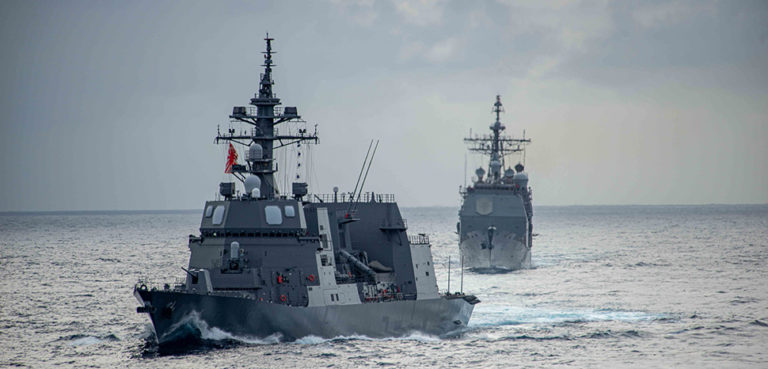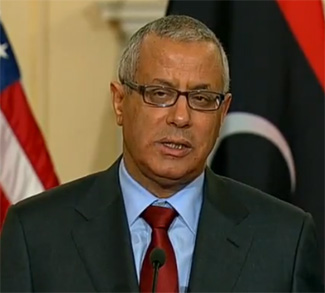Geopolitics is in flux across the Indian Ocean Region (IOR). The area is witnessing intensifying great power competition, notably between China and India, China and the United States, and Russia and the West more generally. Moreover, the rise of regional powers such as Kenya, Saudi Arabia, United Arab Emirates (UAE), Iran, India, Indonesia, and Australia as powerful geopolitical and geoeconomic players is also having a profound impact. These two simultaneous processes are playing out across the six sub-regions of the Indian Ocean: Southern Africa, East Africa, West Asia, South Asia, Southeast Asia, and Australia. And they are likely to intensify the fluidity of geopolitics even further going forward.
Amidst this evolving strategic environment, non-state actors such as the Houthi rebels in Yemen and smaller island states in the Indian Ocean, such as the Maldives, are also emerging as important actors in their own right. Sharpening great power competition is bringing non-state actors and smaller states into play and is granting them greater agency in Indian Ocean geopolitics. The Iran-supported Houthi rebels offer a good example of this trend. Owing to Israel’s war in Gaza, the Houthis have attacked global shipping linked with Israel passing through the Red Sea and Gulf of Aden. These Houthi attacks have disrupted global shipping and the wider global economy as well. The disruption was so significant that the United States, Britain, and India launched naval operations to protect their supply lines. Interestingly, up until now China has been a notable exception here, as the PLA Navy has stayed away from the Red Sea.
In the context of geopolitical flux, one must consider the expanding strategic presence of Russia and China in the Indian Ocean, which is both a cause and consequence of fluid Indian Ocean geopolitics. Looking ahead, there’s a real possibility that both powers act in concert to challenge the current balance of power.
Joint Naval Exercises in the Indian Ocean
Both the Russian Navy and PLA Navy have been expanding their presence in the Indian Ocean in recent years, and they have routinely carried out joint naval exercises. In 2023, China conducted naval exercises with Pakistan while the Russian Navy conducted exercises with Myanmar and Bangladesh. In March of this year, Russia, China, and Iran carried out naval exercises in the Gulf of Oman – the sixth time that these three countries carried out such exercises in as many years. Countries as diverse as Azerbaijan, Kazakhstan, India, Oman, Pakistan, and South Africa dispatched naval representatives to the exercises. As per TASS, “more than 20 combat ships, support vessels, and gunboats from the Russian, Iranian, and Chinese navies participated in the exercises.” The stated purpose of the drills was “to practice measures for ensuring the safety of maritime economic activity.” However, it is clear that the exercises are aimed at increasing strategic co-ordination and sending a message to the West.
Russia and China have also engaged with fellow BRICS member South Africa in naval exercise diplomacy. The last time Russia, China, and South Africa drilled together was in February 2023, the second time that the three countries joined hands for naval exercises. The timing of those maneuvers was interesting as the exercises coincided with the first anniversary of Russia’s invasion of Ukraine. Thus, the exercises represented a clear strategic signal to the West. In defending its move, Pretoria said that “South Africa is not abandoning its neutral position on the Ukraine war. We remain firm in our view that multilateralism and dialogue are keys to unlock sustainable international peace,” adding that South Africa “continues to urge both parties to engage in dialogue as a solution to the current conflict.” More interesting is the fact that South Africa refused to exercise with the US Navy and decided to exercise with Russia and China instead.
These naval drills indicate the growing presence and interest of Russia and China in the Western Indian Ocean.
In Search of an Indian Ocean Military Base
Russia and China have sought to strengthen their Indian Ocean presence by establishing forward military bases in the region. China has established a base at Djibouti in 2017 and has been eyeing (and perhaps even been covertly using) Gwadar Port in Pakistan as a naval base. In 2022, China gained access to the Ream naval base in Cambodia. As per the US Department of Defense 2023 report, China has considered following countries for potential basing arrangements: Myanmar, Thailand, Indonesia, Pakistan, Sri Lanka, United Arab Emirates, Kenya, Equatorial Guinea, Seychelles, Tanzania, Angola, Nigeria, Namibia, Mozambique, Bangladesh, Papua New Guinea, Solomon Islands, and Tajikistan (covered in a recent report).
Of these, with the exception of Equatorial Guinea, Angola, Namibia, Papua New Guinea, Solomon Islands, and Tajikistan, all other possibilities are located in the Indian Ocean. It is notable that despite having a military base at Djibouti, other East and Southern African countries like Kenya, Tanzania, Mozambique, and Seychelles figure into China’s calculations for the establishment of future military bases. Most of these countries already have a deep Chinese economic footprint which will complement Beijing’s strategic outreach. It is well-known that at any time, three to six PLA Navy warships are operating in the Indian Ocean. The regular presence of the survey vessels and spy ships is also a reality. Therefore, from the Chinese point of view, another military base may be useful to help its expanding naval footprint in the region.
For Russia, an agreement with Sudan for a facility at Port Sudan holds out the prospect of a military base with access to the Indian Ocean. The base in Sudan would have complemented the existing naval base at Tartus in Syria and would have strengthened Russia’s presence in the wider Middle East and WIO. However, the disastrous Sudan civil war between the Rapid Support Force (RSF) and the Sudanese army has complicated these efforts.
For Moscow, strategic imperatives along the Western and northern peripheries are obviously more important; developments in the Arctic, Baltic, and Black Seas matter deeply for Russian security. Meanwhile, economic costs and military demands stemming from the Ukraine war, along with sharpening rivalry with NATO in Europe, are together serving to limit Russia’s ability to acquire and maintain a military base in the Indian Ocean – a theater far removed from Russia’s immediate backyard. However, the expansion of strategic presence in the form of naval exercises, port visits, deployments of private military contractors like the Wagner Group, defense exports, and politico-military agreements will continue to be a preferred method of engagement for Moscow. Hence, the joint naval exercises with China and Iran are significant strategic markers for Russia.
China-Russia Collaboration in the Indian Ocean Region
China and Russia have built a ‘no-limits’ partnership and have drawn closer to each other since the Russian invasion of Ukraine. In the context of the imposition of severe Western sanctions, so far, China’s support has been critical for Russia’s military operations and economic well-being. The close strategic partnership that Russia and China have built may perhaps manifest itself in Indian Ocean geopolitics as well. China and Russia have a shared interest in undermining Western influence, and they have a willing partner in Iran as well. Since 2022, Iran has been moving closer to Russia and China. Regular joint naval exercises and exports of weapons platforms are just one example of their increasing strategic convergence.
Expanded influence along with the growing strategic presence of China and Russia could hypothetically be deployed in the future to counter the Western influence in the Indian Ocean Region. There are enough fault lines and trouble spots in the IOR that can be exploited by either of these powers. For example, the domestic politics of certain IOR countries could become an arena for great power competition. The Maldives is a recent case in point, but it won’t be the last. Russia and China have also thrown their support behind the Comorian president, Azali Assoumani. The integrity of the 2024 Comorian elections and Assoumani’s controversial fourth bid were criticized by the United States. This West versus China and Russia competition is set to intensify over issues of democracy and human rights in the governance of Indian Ocean states. Will the West adjust its posture and prioritize strategic influence over liberal values? Or will it continue to frame the strategic competition in ideological terms?
As is usually the case in history, there will be many regional states who will be willing to engage with China and Russia over the West for their own benefit. The possibility of garnering more benefits can push states toward Russia and China and undercut Western influence in the region. Western relations with Central Africa offer a vivid illustration of the process, as French influence was eroded by Russia’s presence in the security and extractive sectors of various Sahel states. Many countries will be willing to play the West against China and/or Russia. This is likely to open newer opportunities and perhaps even challenges for China and Russia. But one thing remains certain: Indian Ocean geopolitics will only become more fluid and complicated going forward.
Sankalp Gurjar is the author of Superpowers’ Playground: Djibouti and the Geopolitics of the Indo-Pacific in the 21st century. He writes on India foreign policy, Asian security, and Indo-Pacific geopolitics.




